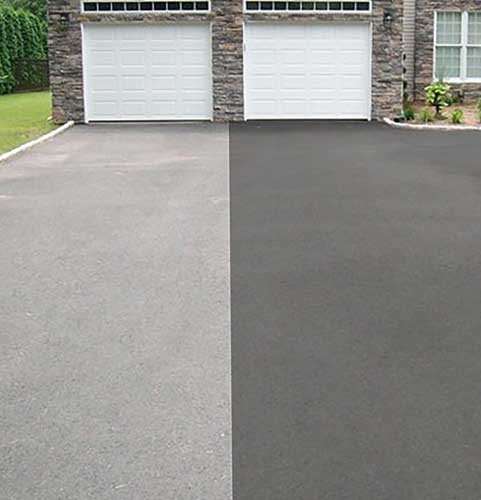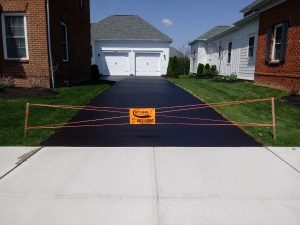Efficient Asphalt Repair: Cold Mix Sealing Techniques Revealed
Efficient Asphalt Repair: Cold Mix Sealing Techniques Revealed
Blog Article
Cold Mix Asphalt Vs. Hot Mix Asphalt: Which Is Right for You?

Structure Differences
Cold mix and hot mix asphalts differ significantly in their composition, with distinct features that influence their performance and applications. Cold mix asphalt is produced by emulsifying the asphalt binder with water and an emulsifying representative prior to mixing it with accumulation. This approach enables the asphalt to be convenient at lower temperature levels, making it perfect for momentary repair services and for use in chillier climate condition. Hot mix asphalt, on the other hand, is produced at high temperatures, typically in between 300-350 ° F, which assists to accomplish better compaction and a more durable final product. The hot mix asphalt production procedure includes heating up the aggregate and asphalt binder individually before incorporating them at the asphalt plant.
Furthermore, cold mix asphalt tends to be much less thick and a lot more flexible than hot mix asphalt. This versatility makes it far better suited for areas with higher levels of motion, such as driveways or roads with heavy website traffic. On the other hand, warm mix asphalt is understood for its high resilience and resistance to rutting and splitting, making it a recommended option for highways and high-traffic roads where long life is vital.
Installment Refine Variations
The process of installing cool mix and warm mix asphalt displays noteworthy differences in their demands and procedures. In comparison, warm mix asphalt requires a much more elaborate setup process. Due to the heating needs, warm mix asphalt installations are generally lugged out by specialists with specific equipment, making certain a more structurally audio and permanent result.
Longevity and Longevity Elements
When thinking about asphalt alternatives, longevity and long life are critical factors to assess for long lasting pavement performance. Hot mix asphalt (HMA) is recognized for its extraordinary sturdiness and long life. The high temperatures throughout the laying and blending procedure permit better compaction, leading to a denser and more powerful sidewalk framework. This causes HMA being extra immune to heavy traffic tons, rough climate problems, and the impacts old contrasted to chilly mix asphalt (CMA)
In terms of longevity, HMA normally outmatches CMA due to its remarkable toughness and resistance buildings. HMA sidewalks have a longer solution life, requiring less regular fixings and upkeep, which can convert to set you back financial savings over time. In addition, HMA pavements are a lot more quickly adjustable to fulfill particular task requirements, even look at this now more enhancing their longevity.
Expense Factors To Consider
Thinking about the economic implications is a critical facet when examining the selection in between warm mix asphalt (HMA) and cold mix asphalt (CMA) for sidewalk tasks. While the first cost of hot mix asphalt is usually greater than that of chilly mix asphalt, HMA usually provides a more cost-efficient option over time due to its premium toughness and durability. HMA is recognized for its capacity to hold up against rush hour lots and severe weather, minimizing the demand for regular repairs and maintenance. On the various other hand, cool mix asphalt is a lot more inexpensive upfront but may call for even more regular patching and resurfacing, causing higher maintenance expenses with time.
In addition to material expenses, it's essential to think about the expenses connected with installment and upkeep when contrasting HMA and CMA. Inevitably, the choice in between HMA and CMA need to take right into account not just the preliminary expense yet also the long-term monetary implications to identify the most economical option for the certain sidewalk task.
Environmental Influence Comparison
Contrast of the environmental effects between hot mix asphalt (HMA) and chilly mix asphalt (CMA) discloses distinctive distinctions in sustainability practices. HMA manufacturing calls for high temperatures, bring about boosted energy usage and greenhouse gas exhausts. The procedure also releases volatile organic compounds (VOCs) and harmful air toxins (HAPs) right into the ambience. In comparison, CMA is created and used at reduced temperature levels, minimizing power use and discharges dramatically. The lower production temperatures of CMA result in lowered fuel usage and visit this website reduced levels of carbon dioxide discharges, making it a much more eco-friendly option.
Furthermore, using CMA often involves recycling existing asphalt pavement, advertising resource conservation and reducing the amount of waste sent to landfills. browse this site This recycling aspect better boosts the sustainability of CMA contrasted to HMA. Generally, when thinking about the ecological effect, CMA arises as a much more ecologically lasting choice because of its reduced power needs, lowered emissions, and the capacity for recycling existing products. By going with CMA over HMA, roadway construction jobs can add positively to ecological conservation efforts.
Verdict
In conclusion, the option in between cold mix asphalt (CMA) and hot mix asphalt (HMA) depends on various elements such as make-up, installment process, toughness, longevity, price, and ecological influence. cold mix asphalt. While CMA supplies a quick and affordable option for minor repairs, HMA guarantees superior longevity and long life for rush hour locations. Think about these factors thoroughly to identify which sort of asphalt is the appropriate option for your paving requires

Taking into consideration the financial ramifications is a crucial element when assessing the option in between warm mix asphalt (HMA) and cold mix asphalt (CMA) for pavement jobs. While the first expense of warm mix asphalt is generally greater than that of cool mix asphalt, HMA frequently offers a more cost-effective service in the long run due to its premium longevity and long life. angle parking.Contrast of the environmental impacts in between warm mix asphalt (HMA) and chilly mix asphalt (CMA) discloses unique distinctions in sustainability practices.In verdict, the selection between chilly mix asphalt (CMA) and warm mix asphalt (HMA) depends on numerous aspects such as composition, installment procedure, longevity, durability, expense, and ecological impact
Report this page